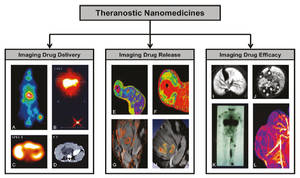
Imaging can be used to support and improve various different aspects of drug delivery and drug therapy. It can e.g. be employed to visualize and quantify the biodistribution and target site accumulation of drugs and drug delivery systems, and to non-invasively assess their efficacy. In addition, molecular imaging techniques can be used to assess drug delivery across biological barriers (by monitoring its temporal and spatial parameters), and to evaluate strategies that aim to improve this process. Furthermore, image-guidance is highly useful for triggering and quantifying drug release from stimuli-responsive carrier materials, such temperature-sensitive liposomes and ultrasound-responsive microbubbles. Finally, by rationally combining drug targeting and imaging, patients can be pre-selected, and treatment protocols can be individualized and optimized, thereby paving the way for personalized (nano-) medicine.
The IGDD field includes, but is not limited to:
read the entire outline on the scope and relevance of the IGDD Study Group

Image-guided drug delivery can be used to non-invasively visualize and quantify probe accumulation at the target site, to validate (triggered) drug release at the target site, and to longitudinally monitor drug efficacy. Reproduced from Lammers et al, Accounts of Chemical Research 18: 1029-1038 (2011).
In case you are an ESMI member - just log-in to the membership portal and update your membership details.
Chairs:
Further founding members:
Former Chairs:
...is to promote the IGDD field and to strengthen the links to related communities by